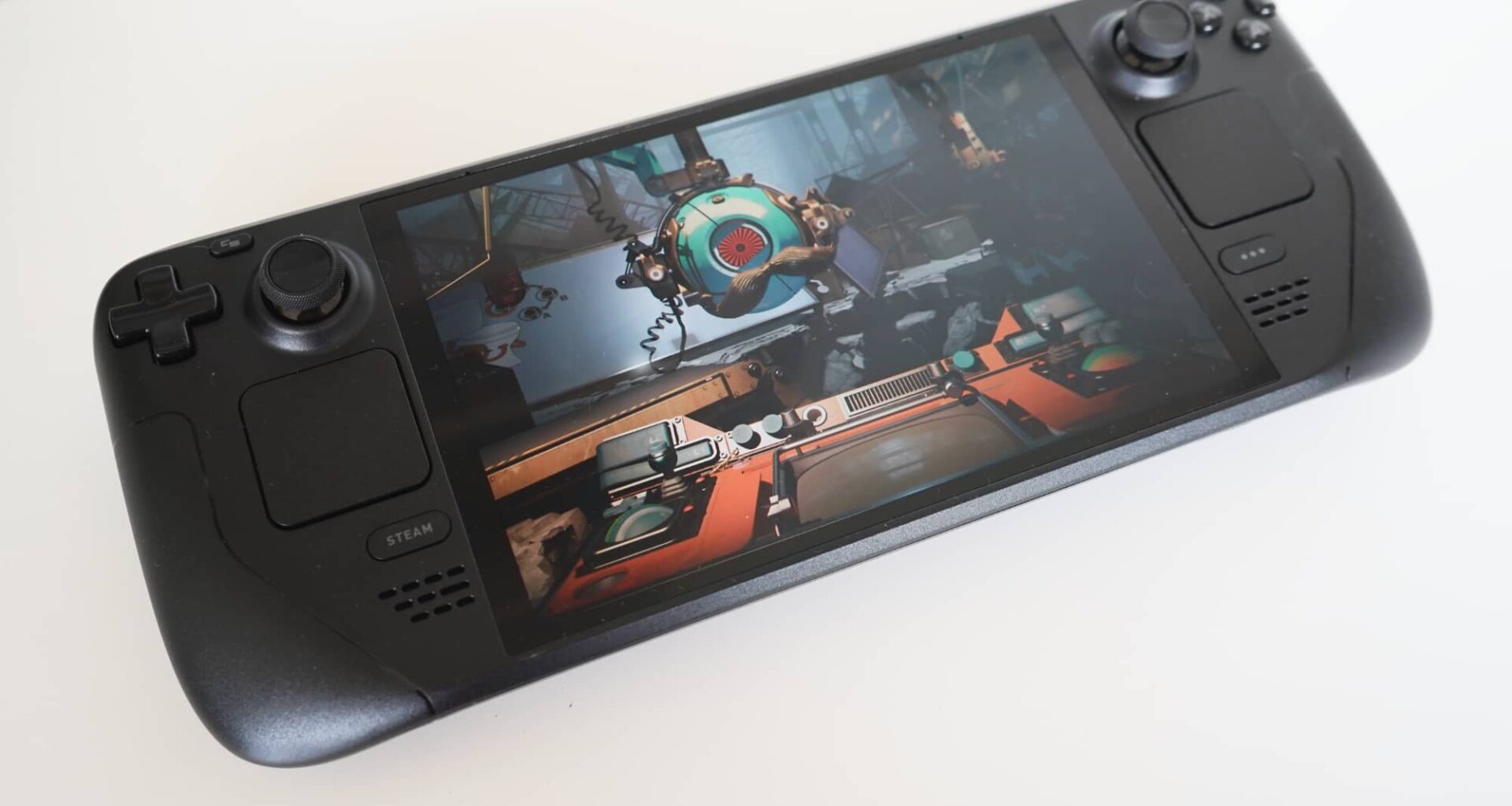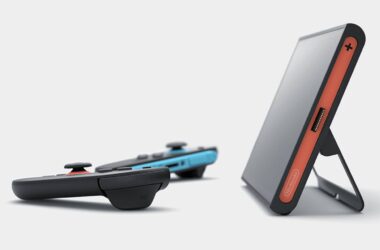Quick review
The good
The not-so-good
Handheld gaming PCs are relatively new, but the king may as well have been crowned, as Valve’s Steam Deck finally arrives in Australia. Is it all it’s cracked up to be?
Ever since video games became a thing, it’s been the dream to take them with you. Instead of being seemingly shackled to a desk, gaming portability is the dream of many.
Laptops made for gaming certainly make that happen, but a PC you can hold in your hands is where the real attention is, and now more than ever, that is possible.
The creator of one of the world’s biggest game catalogue services, Valve is in a key position to make this possible, delivering the promise of a system that acts as a PC, but works like a proper gaming system. Instead of needing to fiddle with settings, you simply access your game library and it just works.
That’s the premise of the Steam Deck, and the promise of a handheld gaming PC designed to just work. It’s not new to the US, having launched there a couple of years ago, but Australians are now seeing a proper release of Valve’s portable PC console of sorts. Has it been worth the wait, and is it worth the price?
Design

Somewhere between a gaming system and a computer is where the Valve Steam Deck lives, and it’s a look we’ve seen before. If you’ve seen the Asus ROG Ally models, you’ve seen it. Hell, if you’ve seen a Nintendo Switch, you’ve seen it.
Portable gaming is a specific style at the moment, as the look of the classic Game Gear is revived and made better thanks to improvements in technology going ahead in leaps and bounds.
A big screen in plastic body with a computer, plenty of controls, a speaker system and mic, and the ability to run games. That’s what the Steam Deck is, and it is like other portable gaming PCs, too.
It won’t break new ground in Australia for gaming handhelds, but it was one of the first, so it kind of did break ground in the first place.
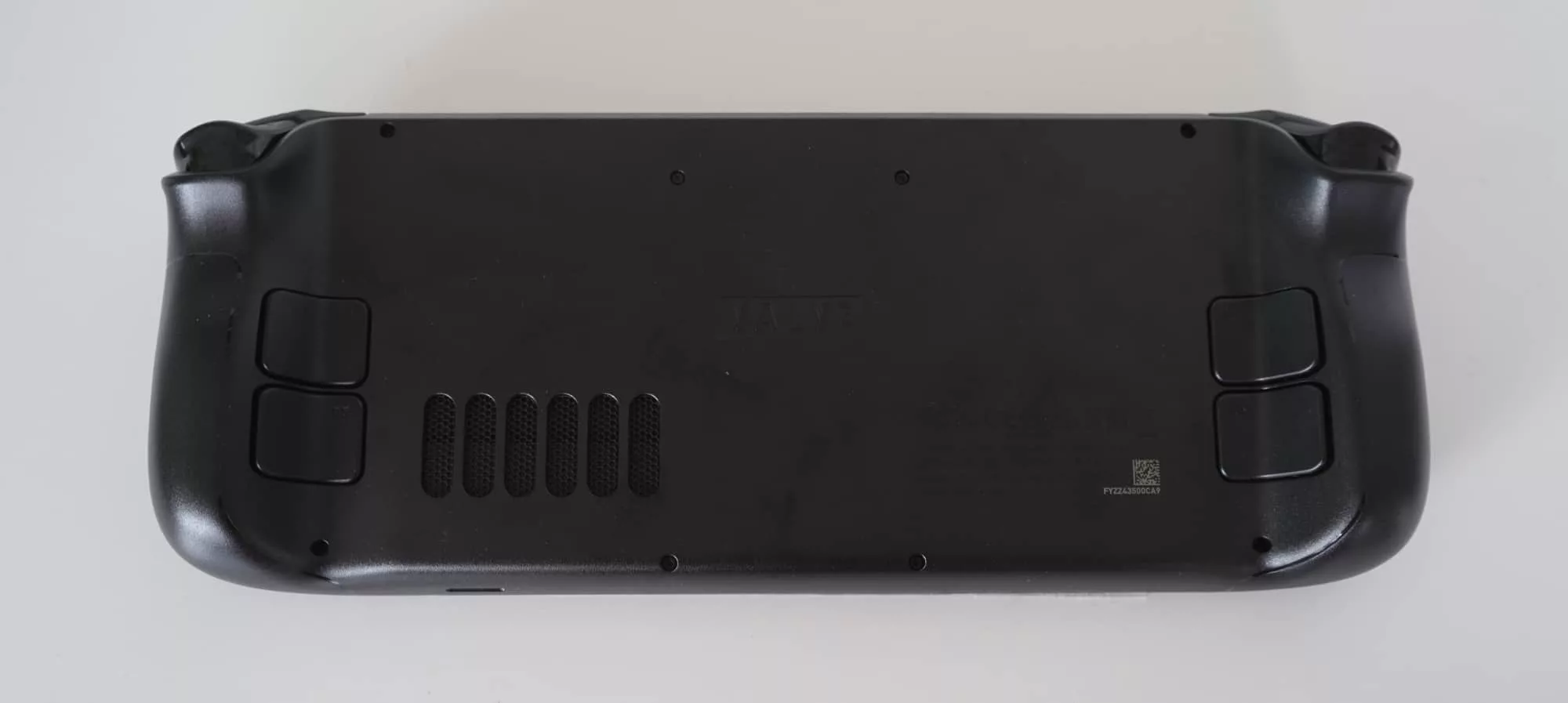
Features
Inside, the technology is a touch reminiscent of other portable gaming systems made to compete, but also a little different again.
First, there’s the similar: an AMD graphics and processing unit in the 6 nanometer APU, an “accelerated processing unit” that combines both CPU and GPU, and is designed to deliver power and graphics in one package. It’s likely to be similar to the Ryzen chips used in similar models, though it is a custom AMD chip with graphics optimisations for battery life.
That hardware is paired with 16GB RAM and either a 512GB or 1TB NVMe solid-state drive, depending on how much you want to pay for the OLED model. We’re reviewing the model with 1TB inside, but they’re both pretty much the same albeit the change in SSD storage space.
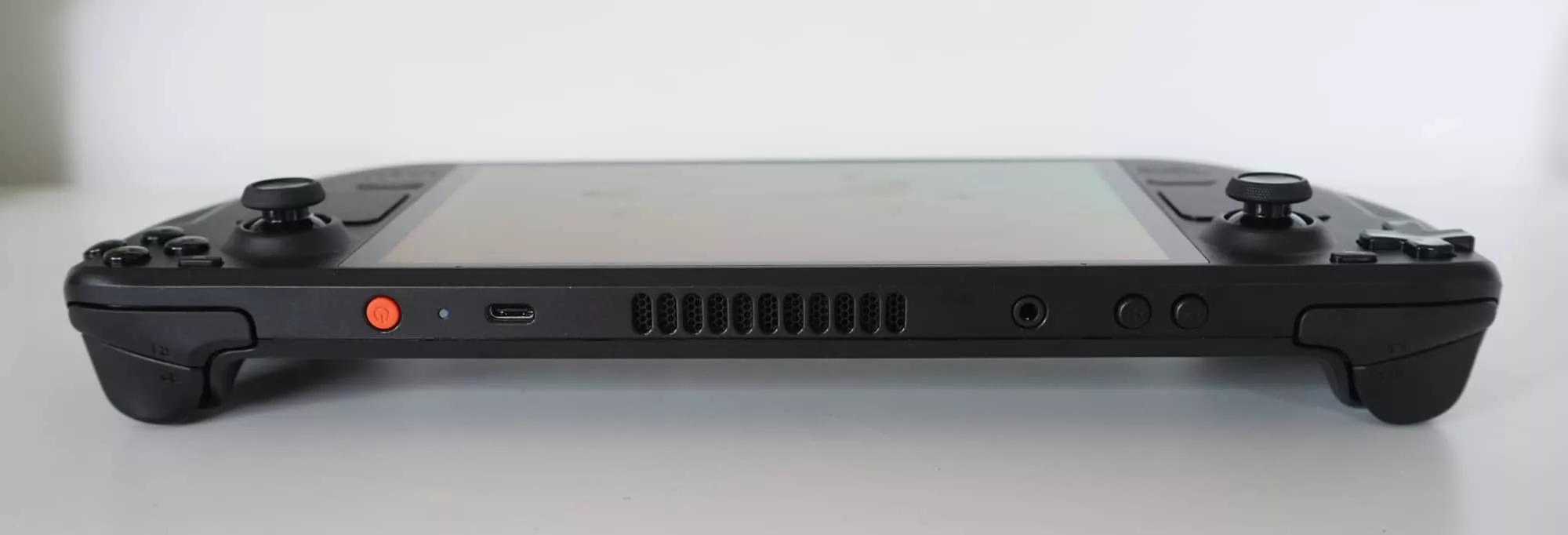
For instance, they both come with a microSD slot to expand the storage if need be. They both come with WiFi 6E and Bluetooth 5.3, and they both have a stereo speaker system and 3.5mm headset jack, as well as an abundance of controls.
Two analogue sticks with touch behind them, two sets of bumpers, a directional pad, a set of four action buttons (ABXY), two analog triggers, two trackpads with vibrating haptic feedback, four grip buttons, and a gyroscope to control a 6-axis motion controller built into the design.
There is so much here for controls, it makes you wonder when a game will be made to take advantage of everything.

Display
The screen is also high enough without being deluxe, providing a display that’s paired with the processor to deliver the right amount of grunt and graphics without letting the team down.
In the Steam Deck OLED, Valve has equiped a 7.4 inch 1280×800 HD OLED display with support for HDR and a maximum refresh rate of 90Hz.
Technically, it’s not the best gaming screen around, but it doesn’t have to be. The 7.4 inch Steam Deck OLED screen is made to suit the performance of the Deck itself, and doesn’t quite need to anything else. It even comes with touch, allowing you to control the action using the touchscreen, or even just type a message to a friend when they gifted you a game.
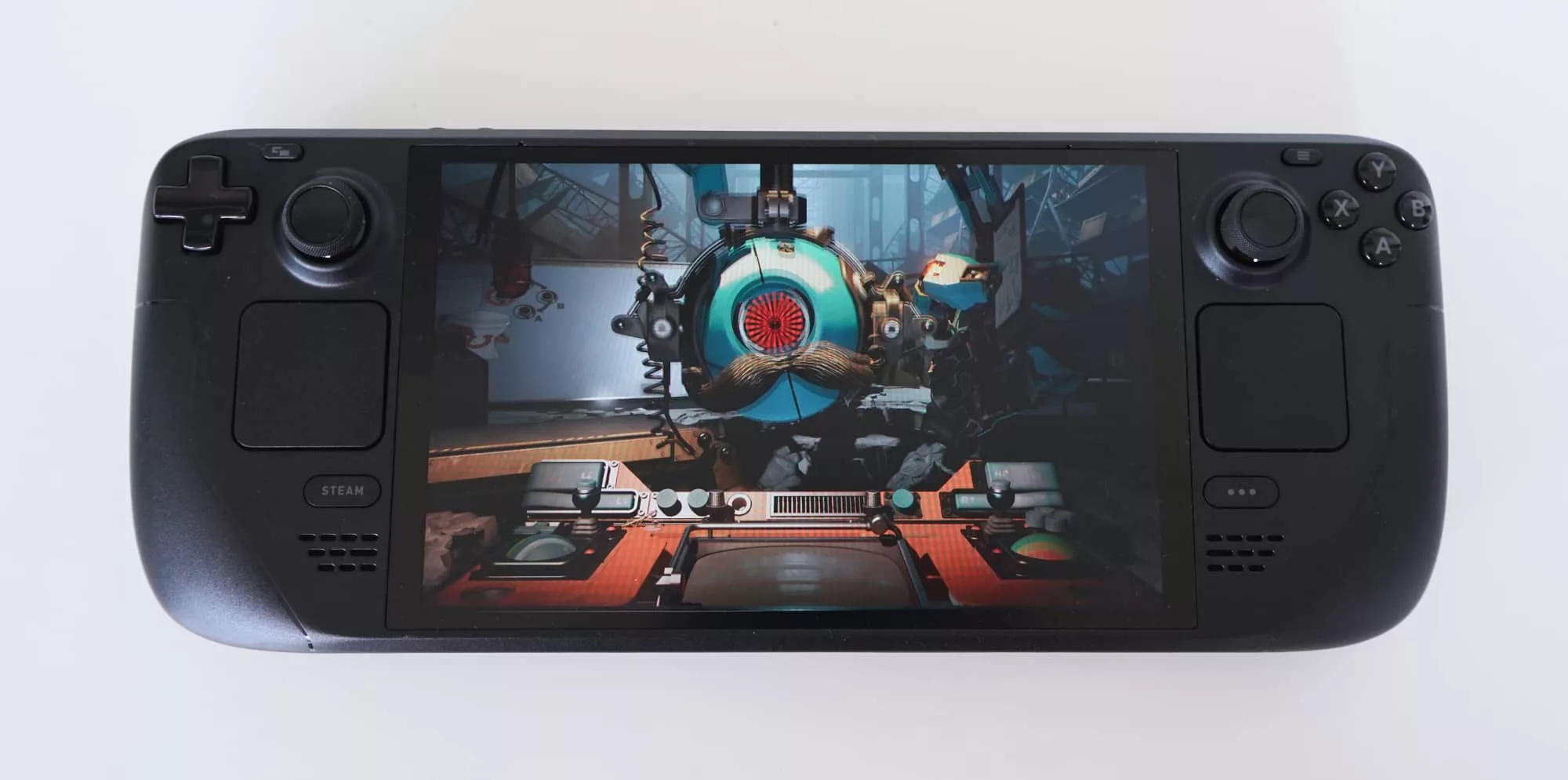
In-use
Pick up the Steam Deck and if you’re a gamer, everything should become apparent to you. And if you’re not, the same actually applies.
Pretty much everything is mapped to controls with on-screen elements related to the physical controls, so you get an idea of the what you need to do if you’re not familiar.
That’s helped by the sheer number of controls: the two analogue joysticks and the two touchpads with some haptic feedback underneath, not to mention the touchscreen which helps in jiffy if you’re not quite sure what to do. Hold tight, by the way, because you’ll get the hang of it quickly.
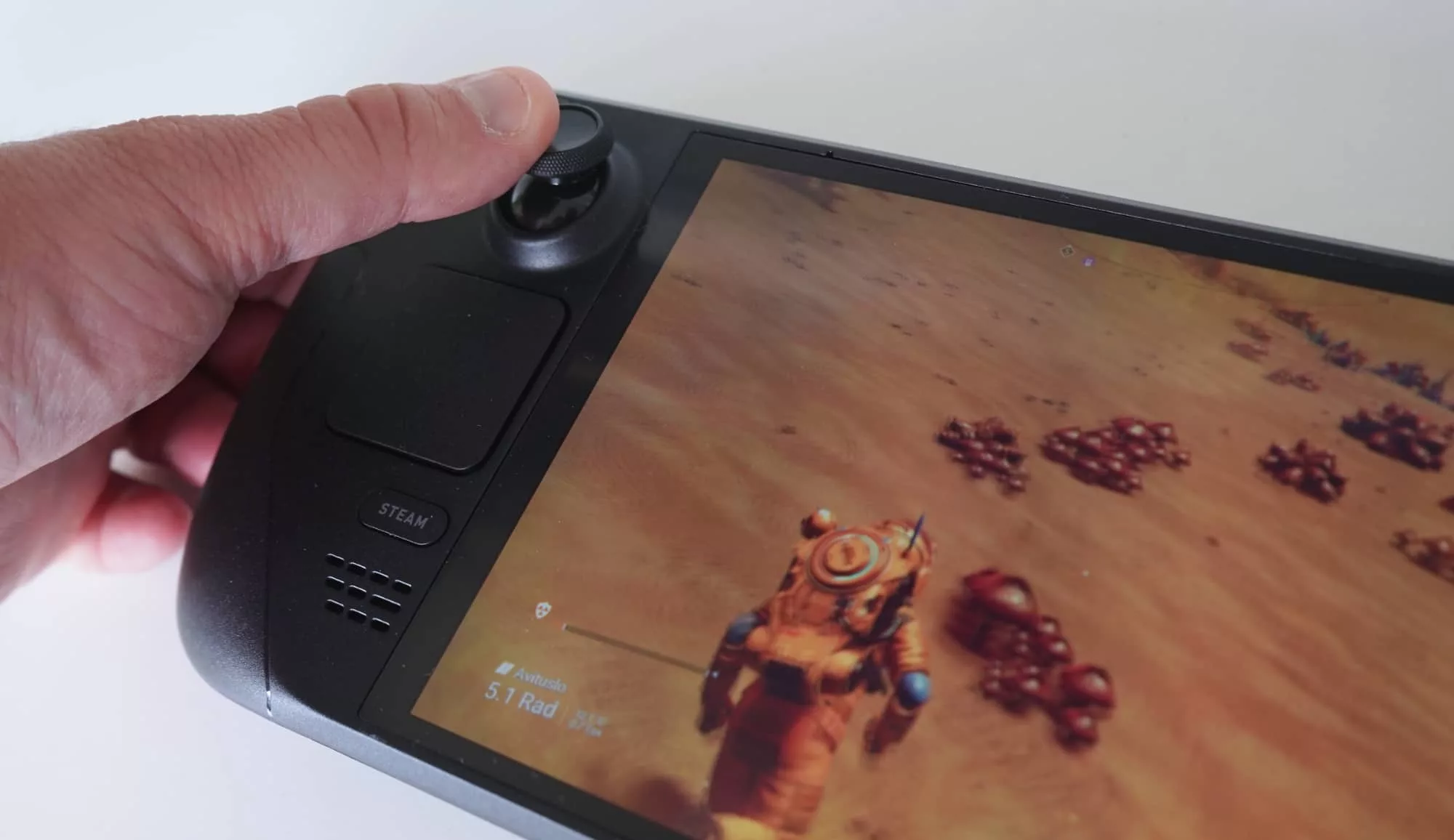
The combination of hardware and software is so well designed, you’ll feel just how well everything connects together as you set the system up. This isn’t just an operating system forced to fit inside of a small computer; these are controls made for the small computer.
It’s a custom operating system, custom controls, and custom experience made from the ground up to deliver an easy way of playing games from Valve’s Steam catalogue on the go. It is genuinely clever.
Performance
Powering this genuinely clever handheld gaming PC is a custom AMD chip, though it’s one where the performance isn’t on all the performance on the world, but enough to make a different. Enough to run a decent amount of games from Steam, even if it might not be the AAA best-in-class games released now that need a better gaming computer.
In short, the Steam Deck is made for gaming to go, and you see that when you compare the benchmarks against other gaming systems, be it other handhelds or gaming laptops.
As a note, the Steam Deck OLED we’re reviewing doesn’t support OpenCL or Metal graphics, using Vulkan more like an Android phone might. That’s indicative that our benchmark is going to be more of an Apples vs Oranges sort of thing, so take these scores with a grain of salt.
Even with a grain of salt, it becomes pretty clear that the custom AMD chip used in the Steam Deck can’t quite match the AMD chips used in other handheld gaming PCs. It’s fast enough, but not necessarily as fast as every game will need.
Interestingly, it’s as fast as the M1 MacBook Air from a few years ago, just somehow packed into a much smaller design, and it’s not dramatically far from what we saw in last year’s ROG Ally, the first generation, even if it can’t quite compete with this year’s Ally X update.
The biggest and best games will still yearn for a fast and meaty graphics accelerator, not to mention a relatively hefty processor, and that’s not something the Steam Deck necessarily has.
However, what that translates to in games is something quite solid, with new and recent games able to handle the Steam Deck well. It’ll handle No Man’s Sky, and it may handle a bunch of other recent entries, too.
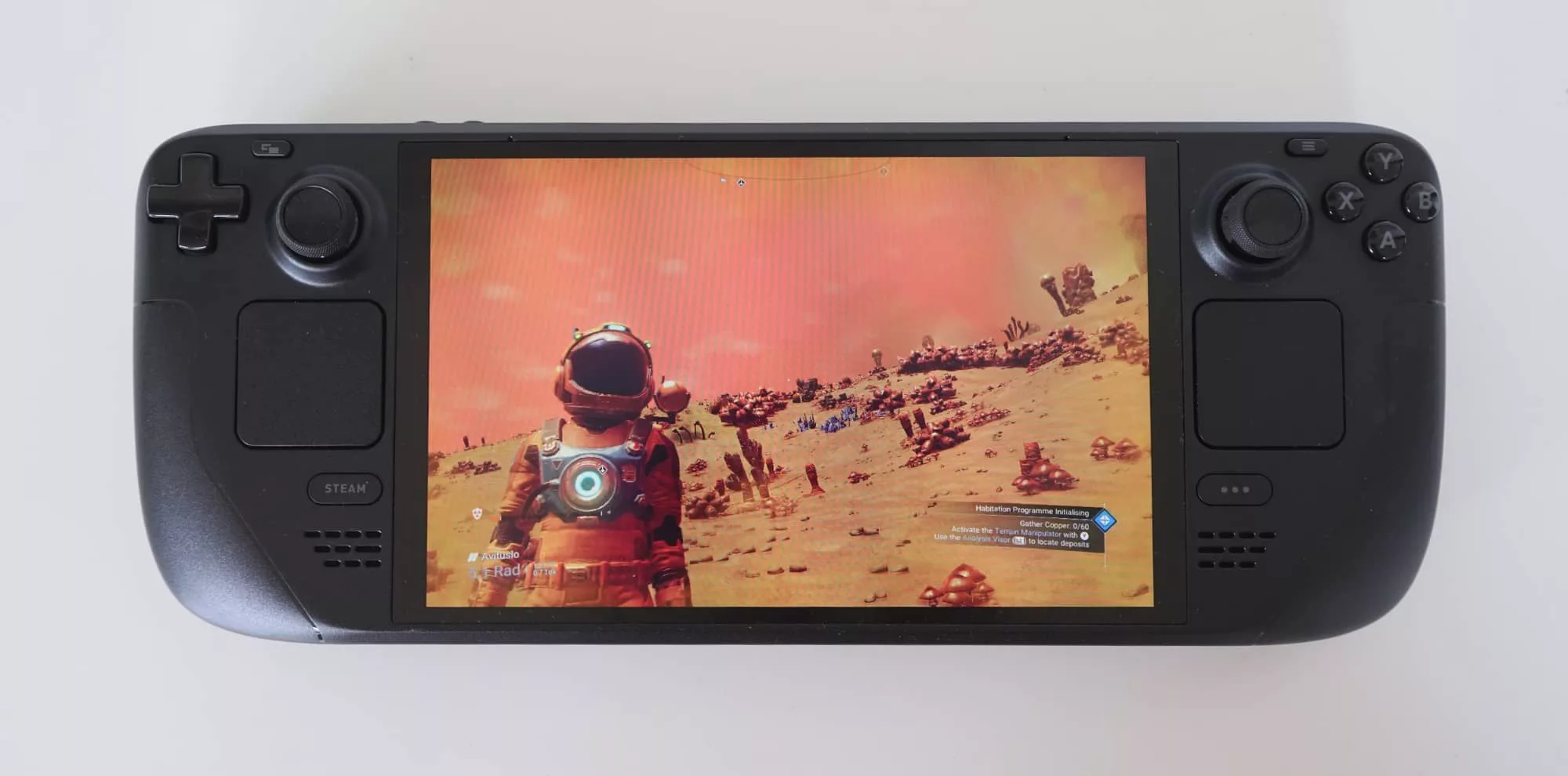
But big games with an emphasis on large graphics won’t make an appearance. The latest Star Wars title, Outlaws, is not made for the Steam Deck, and given its hefty requirements, we wouldn’t expect it to run nicely, even if you did get it installed in the first place.
Many of the thousands of games on Valve’s Steam catalogue will be fine, however, and that is the point.
With a return to games not just built with lifelike visuals in mind, but story-rich experiences made be developers big and small, the Steam Deck OLED seems perfectly suited to a variety of titles than just the big console-style assortment.
It’s a deliberate choice, and one that means owners of the Steam Deck won’t necessarily have to think about their hardware specs to play a game, much like you would if you owned any other gaming PC. It’s about a decision to just play a game on a PC: it either works fully, works somewhat, doesn’t at all, or hasn’t been tested yet.
Steam Deck owners are being given a simple explanation for gaming on a PC to go, and they don’t have to mess about in settings to make it work.
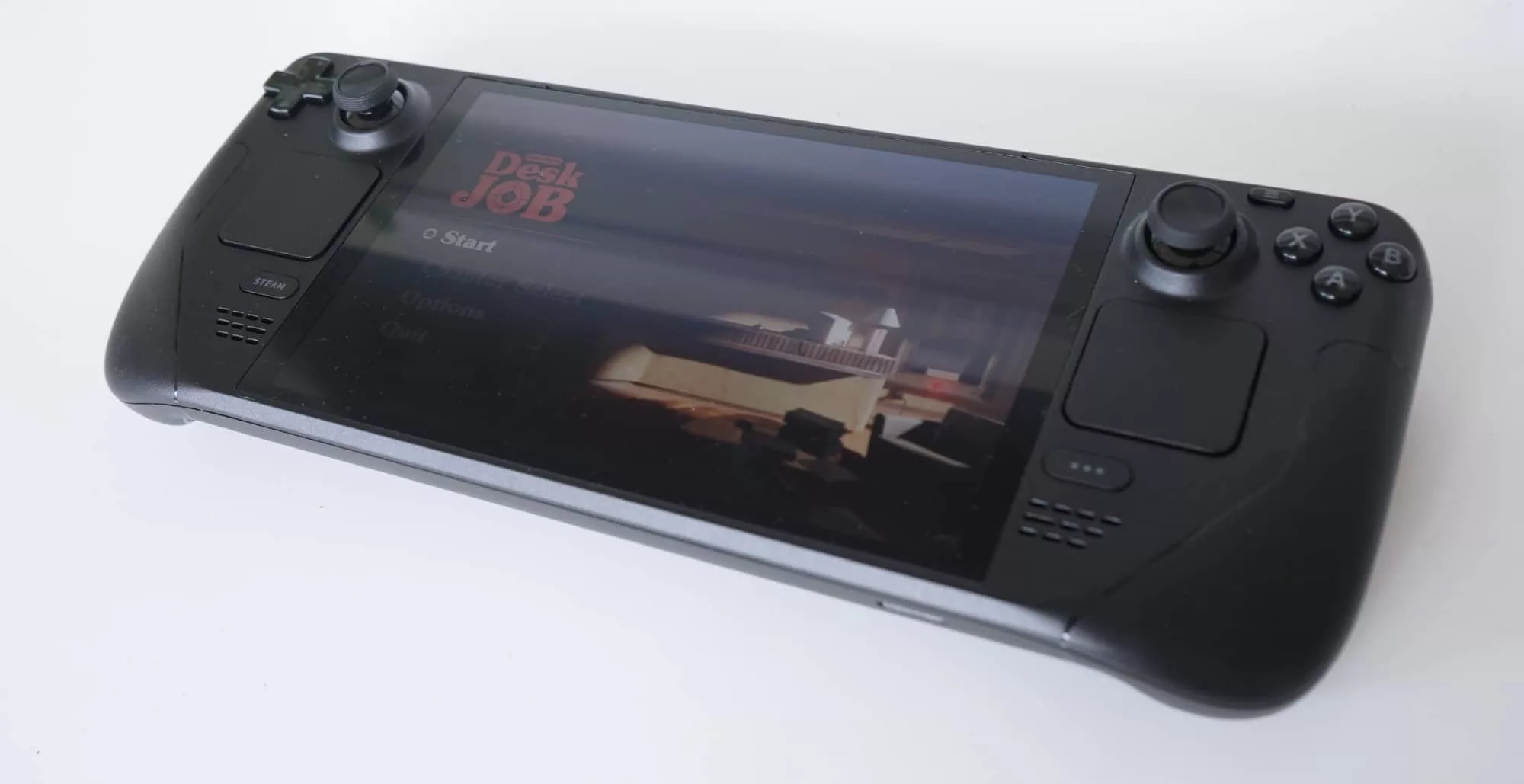
Battery
Battery life is a bit of a mixed bag, though, thanks in part to all the games being different.
From our experience, you’re likely to get between 4 and 7 hours of gaming use out of the Steam Deck, but Valve notes the 50Whr battery can technically cover as much as 12 hours of battery life.
We suspect that’s possible if you stuck to some fairly simplistic casual games, and ideally something not likely to tax the graphical part of the chip inside.
Fortunately, the system is charged using a standard Type C connector and comes with a 45W charge pack in the box. If you’re planning to take this show on the road, you may want to consider a meaty power bank to keep your gaming going even longer.
Value
Even if the battery life could be slightly better, the value is just tremendous. Valve has really delivered on pricing.
In Australia, the Steam Deck OLED starts at $899, which is a nearly half that of the Asus ROG Ally X, and a move which makes the Steam Deck competitive with just about every other model out there (more on that shortly).
The hardware is great, the design is great, the result is great, and the package is great, too. It even comes with a case.
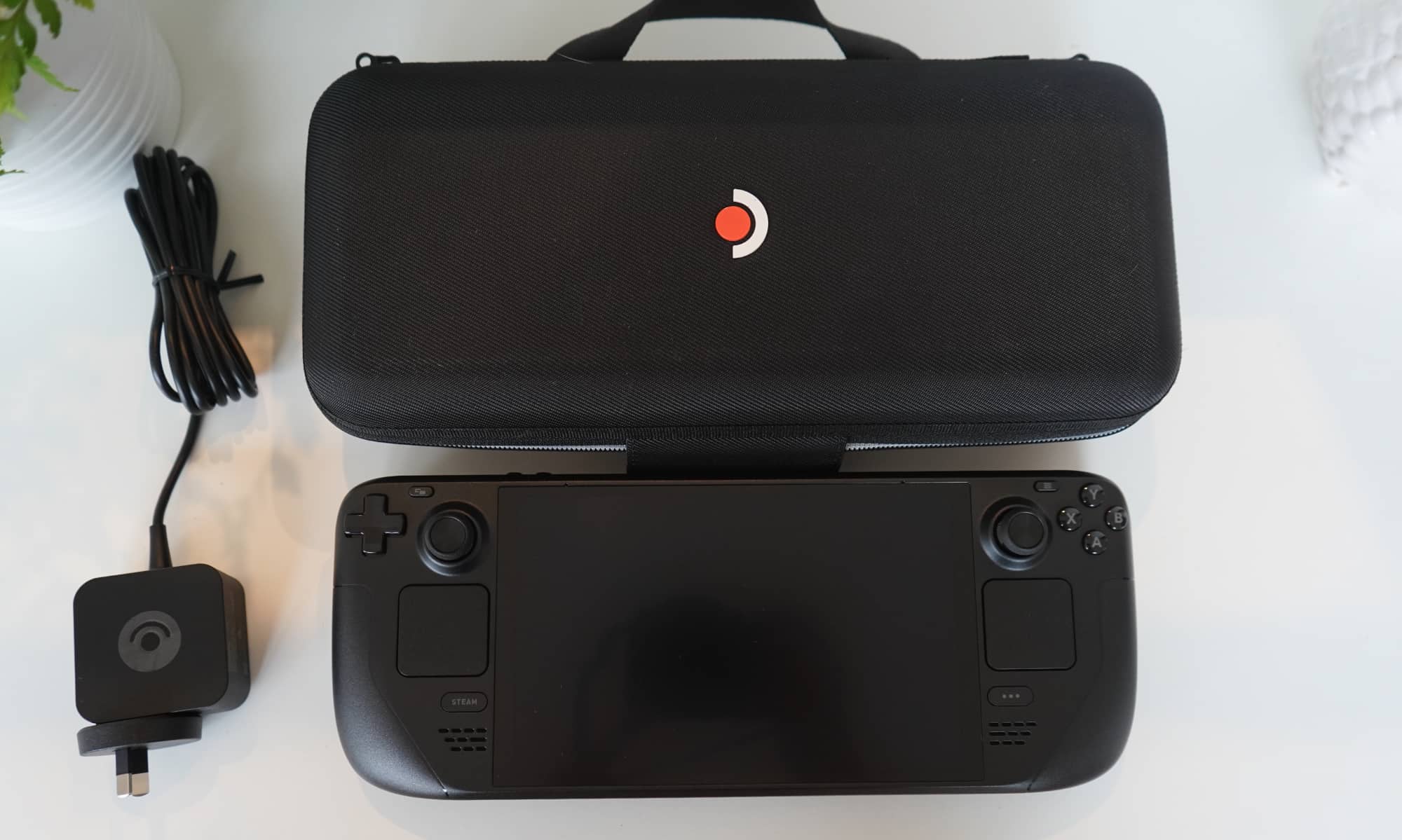
What needs work?
In fairness, very little needs work on the Steam Deck at all. It’s such a well-designed gaming system that it seems like everything has been thought out.
It’s such a breath of fresh air. It’s a the gaming interpretation of everything in its right place.
But there are some things you need to know, such as how not every game will work, even if they will on a Windows laptop or even another Windows-based gaming portable.
The Steam Deck runs on a Linux-based desktop, and so games are effectively being made to run on Linux, but won’t always get there. Some games work, others don’t at all. Some exist in this weird place where they theoretically run, but the controls don’t execute at all.
Nights Into Dreams is one of those sitting in the latter category, where the menu works, but the controls struggle to let you get through the main menu. Some games just flat out don’t run.
To Valve’s credit, the use of tiny touchpads on each side with vibrating haptic feedback underneath does make it possible to play games you never thought would convert on this style of device. Use a mouse like you would for faster turning in first-person shooters, or use that touchpad in real-time strategy games: they both work better than they should.
But not every game will, and you need to know that going in.
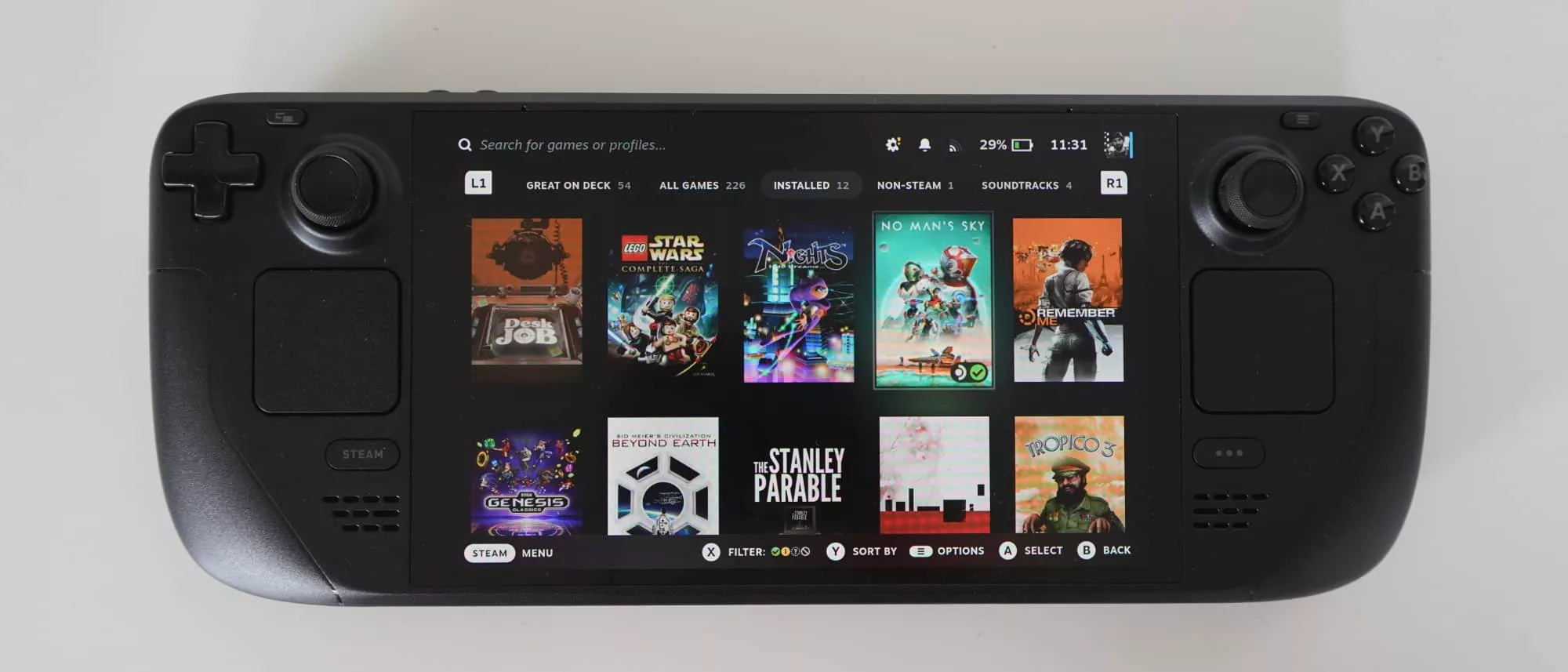
With a collection of 200-odd titles, only a quarter were found to run on the Steam Deck properly, and not every title fared as well as another.
There are over 100,000 games on Steam with roughly 15K being Steam Deck Verified or Playable. That number is growing, but there’s a chance you have a game that won’t play, at least not tight now.
The other problem is the lock-in, because much like how a Kindle is locked into only buying books from Amazon, the Steam Deck is largely locked into having you only buy games from Steam.
That could be one reason why the price is so affordable: much like how a Nespresso Vertuo machine forces you to buy Nespresso Vertuo pods, so too does a Valve Steam gaming portable force you to stay inside the Valve Steam gaming platform.
There are hacks, that said, to get you around it, allowing you to install scripts if need be to get other games installed. But these clearly aren’t for everyone, and they may not even work well in the first place.
If you have games on GoG, Epic Games, Amazon Gaming, or just about any other game marketplace, and you want to keep playing them, the Steam Deck may not be for you. This is more or less just for gaming with titles from Steam.
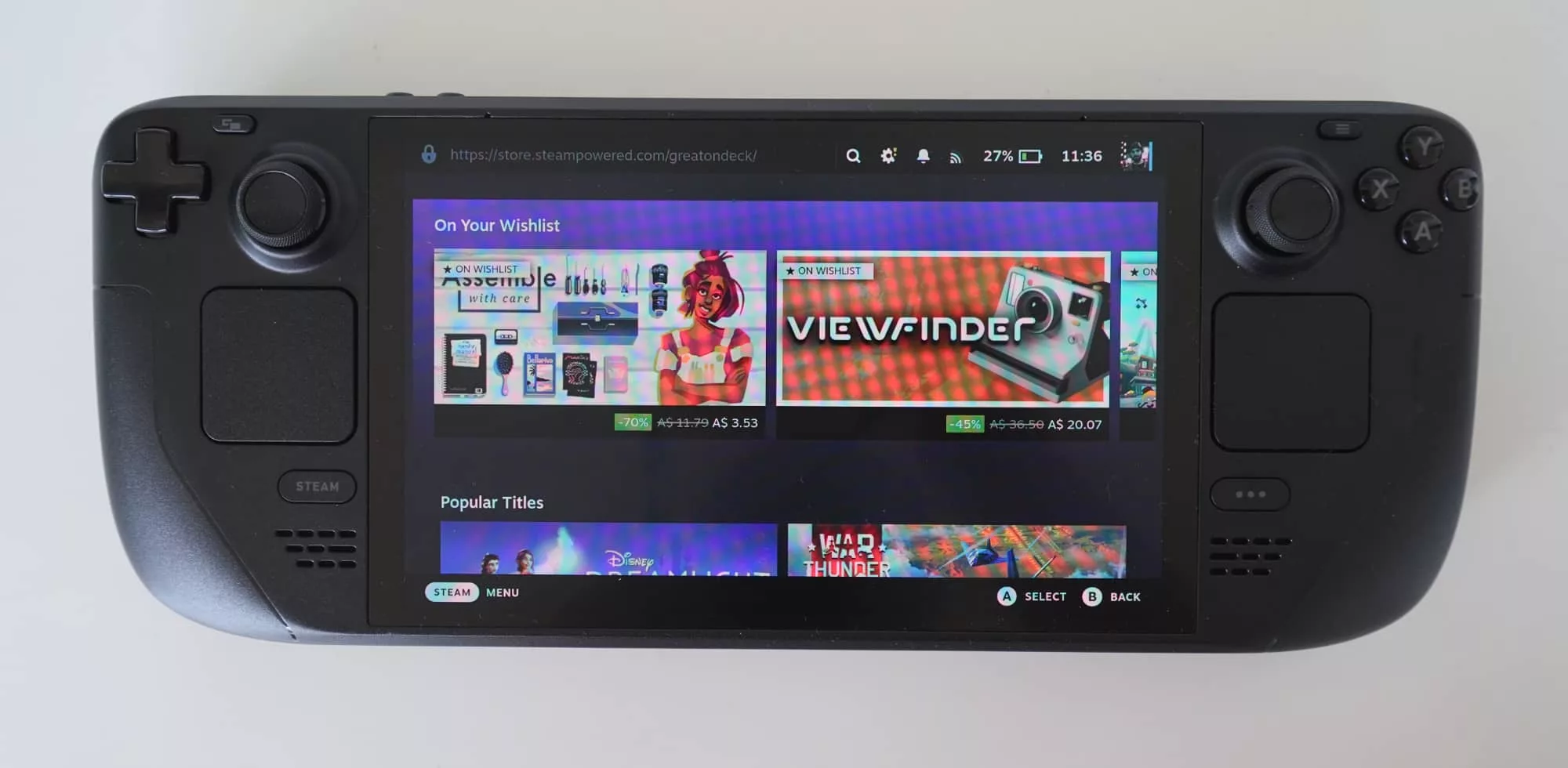
What we love about the Steam Deck
And yet we’re completely fine with that.
While our Epic Games and GoG collections are relatively sizeable, and gaming libraries from other locations have been expanding for some time, too, the Steam Deck rekindles this reviewer’s love for gaming in a way only a portable could really achieve.
Instead of needing to get out a laptop to game, we can simply reach for the well-designed handheld, have a quick game, and put it back. No fuss, no drama, no problems. It’s awesome.
In fairness, every gaming portable would win this argument, but the Steam Deck nails it in another way: it just works.
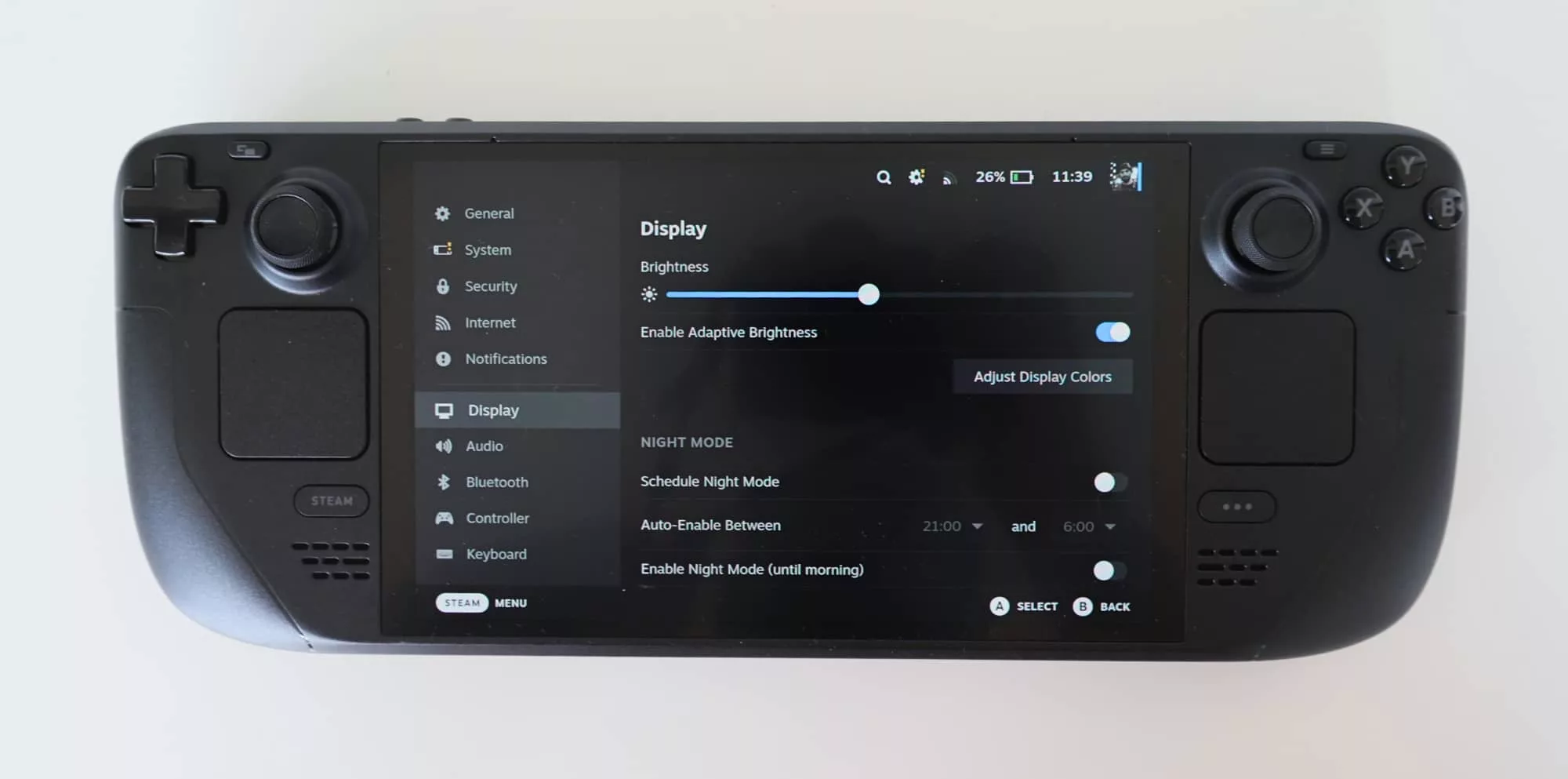
Even the clever Asus Armoury Crate software of the ROG Ally range feels clunky by comparison, forcing you to go through Windows with setup procedures and driver changes at times. Other gaming handhelds are just the complexity of Windows made for a small screen, and Windows doesn’t like small screens.
Valve has made a gaming system that feels like it just works. The setup is easy and painless, and the game installs are much the same. Everything about Steam’s Big Picture mode made for the Steam Deck just delivers on a totally frustration-free gaming experience. It feels made for purpose.
That’s handy because it means if you want to game, you can just get stuck in. And it means that the next time a Steam sale comes up, you can spend up knowing you finally have a system that you can rely on at any time.
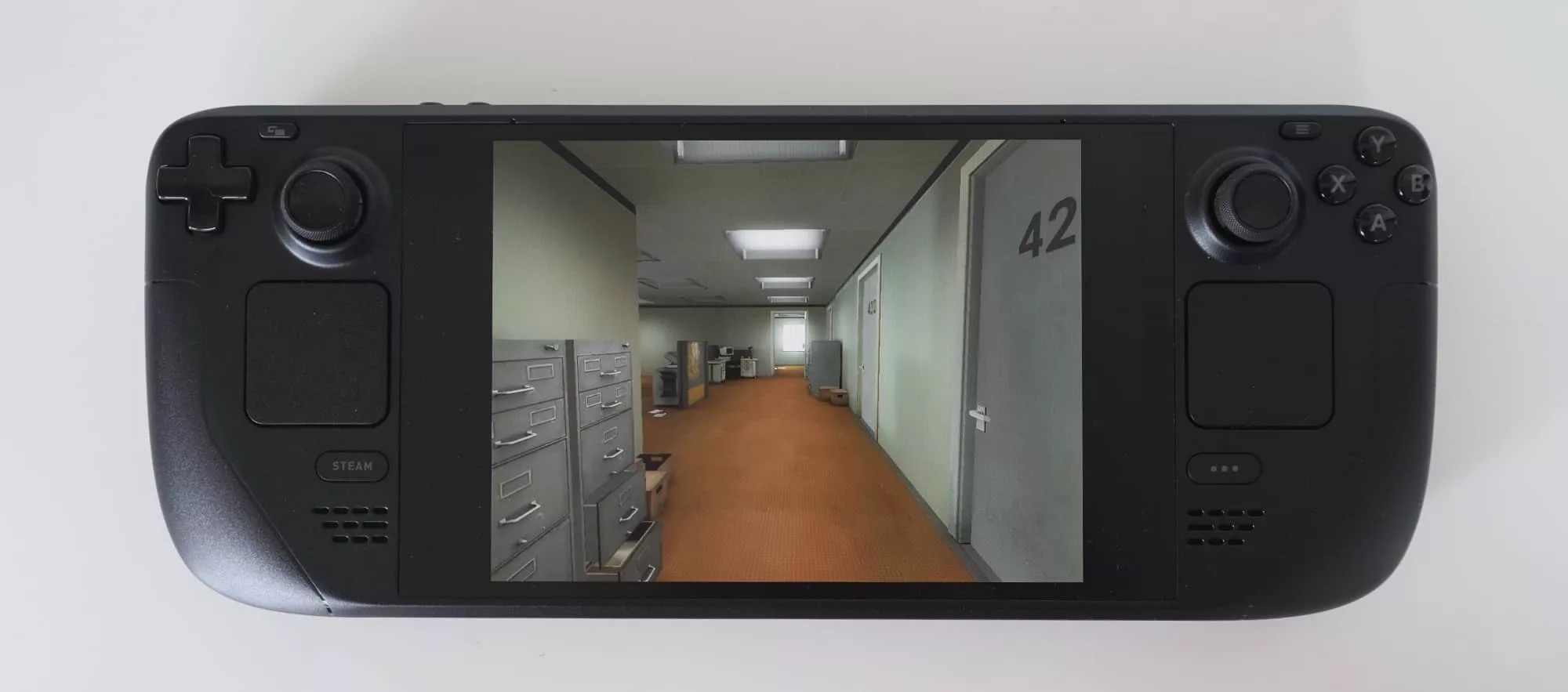
Steam Deck vs the competition
In terms of what the Valve Steam Deck competes with in Australia, the contenders are pretty clear: there’s the Asus ROG Ally duo consisting of last year’s Ally and this year’s updated Ally X, as well as similar variants from both Lenovo and MSI, plus an assortment of handheld gaming PCs from upstart Ayaneo.
There are choices, that’s for sure, but none of them have as compelling a price tag as Valve’s Steam Deck.
Starting from $899 in Australia, Valve has priced this hardware in such a way, you’d be hard-pressed to find a better deal. Granted, you need to spend a little more than a thousand dollars to get the 1TB OLED model we’re reviewing, but even that is a better value than the $1597 of the similar 1TB Asus ROG Ally X.
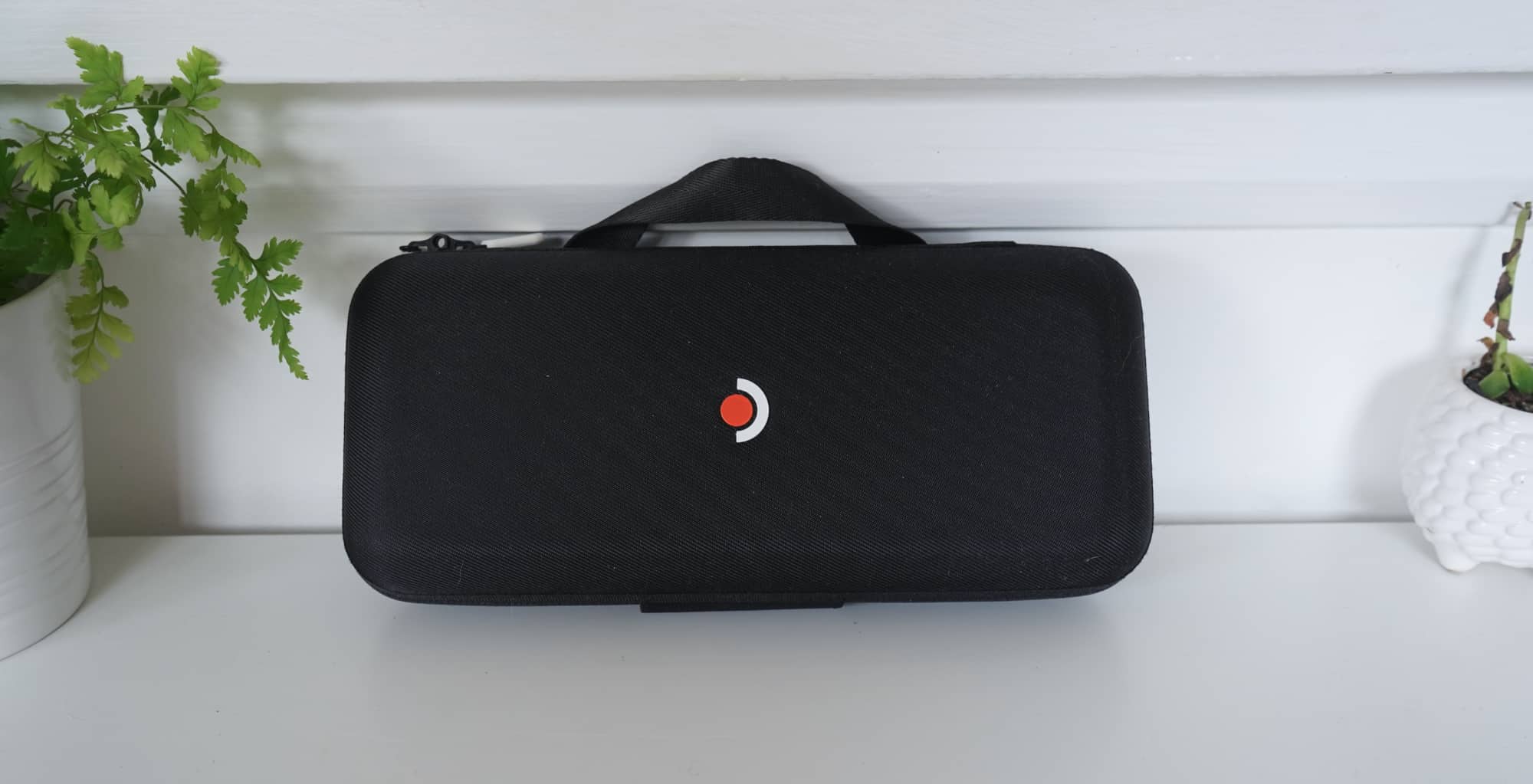
It is just a stunning price, and it comes with a case. None of the competitors we’ve seen come with a case. That would easily be an optional extra.
And if you don’t need the best screen or latest generation of the chip, Valve also has the Steam Deck LCD with the 7 nanometer version of the processor, slightly slower memory, slightly slower WiFi, and a slightly smaller battery available from $649.
No gaming PC can compete with that. Frankly, Valve’s Steam Deck has everyone beat.

Final thoughts (TLDR)
It may not be the fastest gaming PC around, but for what it aims to do, the Steam Deck really delivers.
Valve’s hardware choices have all contributed to what is still quite clever: an approach to find enough of the performance needed for middle-ground in a well-priced handheld gaming system.
PC gamers keen on playing the best and brightest and latest games won’t be happy here, but in fairness to Valve, games with heavy graphics would destroy the battery of a portable system considerably… and fast.
On the other hand, there are tons of games in a Steam library that haven’t likely haven’t been touched, and the Steam Deck is made for that. To let you get through your ever-growing list brought on by excess Steam sales and those on Humble Bundle, to name a few.
Could the hardware spec be a little better? Sure. Could the battery be improved? Yep, sure, why not. But in its current configuration, the Steam Deck OLED is good enough for PC gaming to go.
The overall value the Steam Deck OLED presents makes it one of the best handheld gaming options you can find today. Highly recommended.



